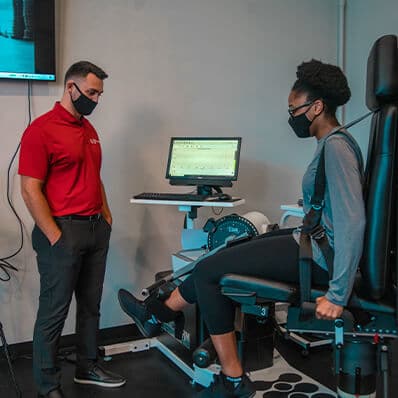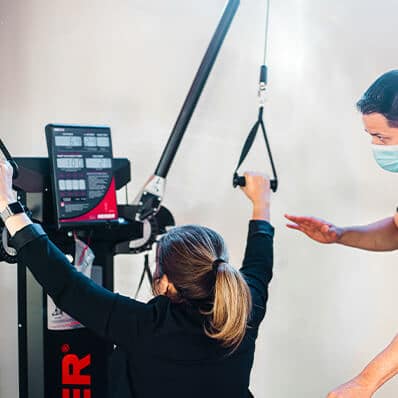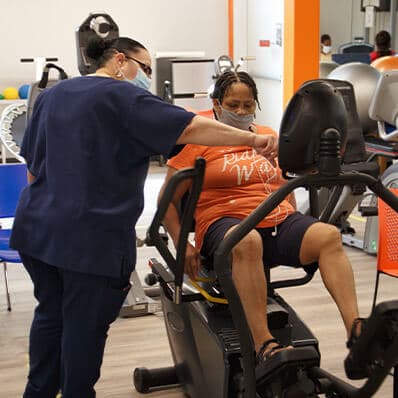This patient is a 37 year old registered nurse who is known to be Asthmatic but well controlled, and has a history of migraines and uterine fibroids with painful menses. She is an avid exerciser and is a member of a cross-fit exercise group that meets and exercises four times weekly. She gives a 2 year history of recurring episodes of LBP aggravated usually by increased work loads during her shift and which generally responds well to her exercise routine and settles within 2-3 days. About 7 weeks prior to her evaluation, she developed back pains after an unusually challenging work shift but noted on that occasion that she now had intermittent pains in the anterior of her left thigh. She was concerned about the new symptoms and sought medical attention at the staff clinic and had an MRI done which revealed a small central disc herniation at the L5 S1 level with no other bony or soft tissue anomaly. She was prescribed Norgesic with minimal relief and at her physician follow-up was referred to PT with a diagnosis of Mild L5 S1 Disc Prolapse.
Physical Findings
Static testing:
Impaired back extensor muscular endurance (could not clear the sternum off the plinth and hold for more than 20 seconds).
Abdominal endurance tests were normal.
Dynamic testing:
Nil temporal or spatial gait deviations noted
Full painfree ROM in flexion, extension, sideflexion and rotation.
Aberrant movement on return from flexion, which was associated with pain.
Repeated movements did not increase or decrease symptoms:
Nil impairment in motor control of the lumbar spine musculature during sit to stand transitions or ascending/descending stairs. However there was abnormal timing of the activation of the paravertebral muscles on return from flexion. bending
Over the course of three weeks (3 visits) the patient’s pain has completely abolished with a commensurate reduction in her ODI score, currently at 2%. On re-pass of the SBST the patient’s overall score had declined to a 1, moving her into the low risk category. The next step in her rehabilitation is to translate her stabilization strategies into more dynamic functional tasks such as brisk walking. This is part of staged approach to returning to running and other exercises over the next 3-5 weeks.
While the patient’s rehabilitation is currently on-going, initial response to three weeks of stratified care demonstrate elimination of pain with reduced disability, measured with the Oswestry Disability Index and an improvement in the patient’s overall risk stratification on the SBST.




